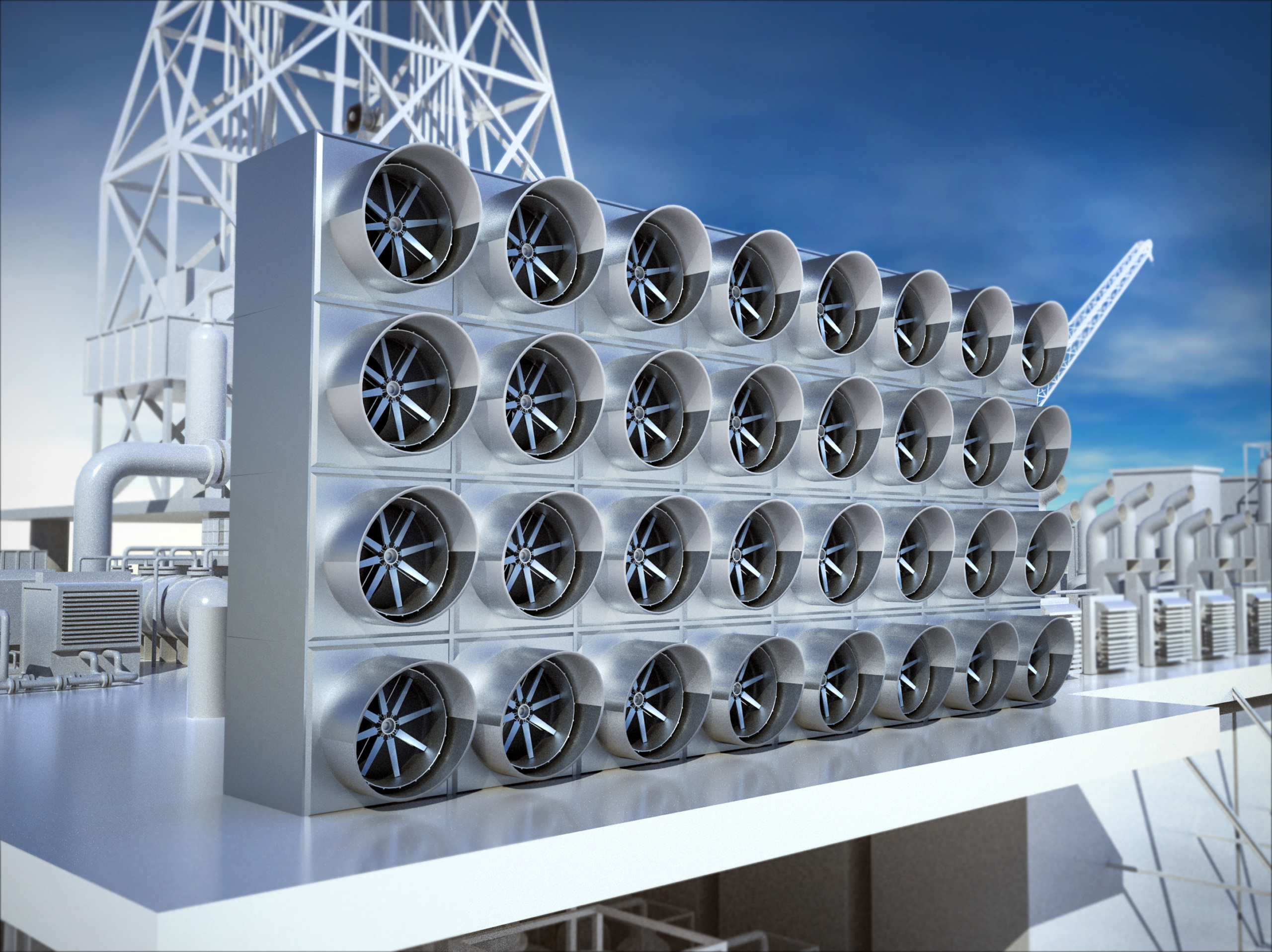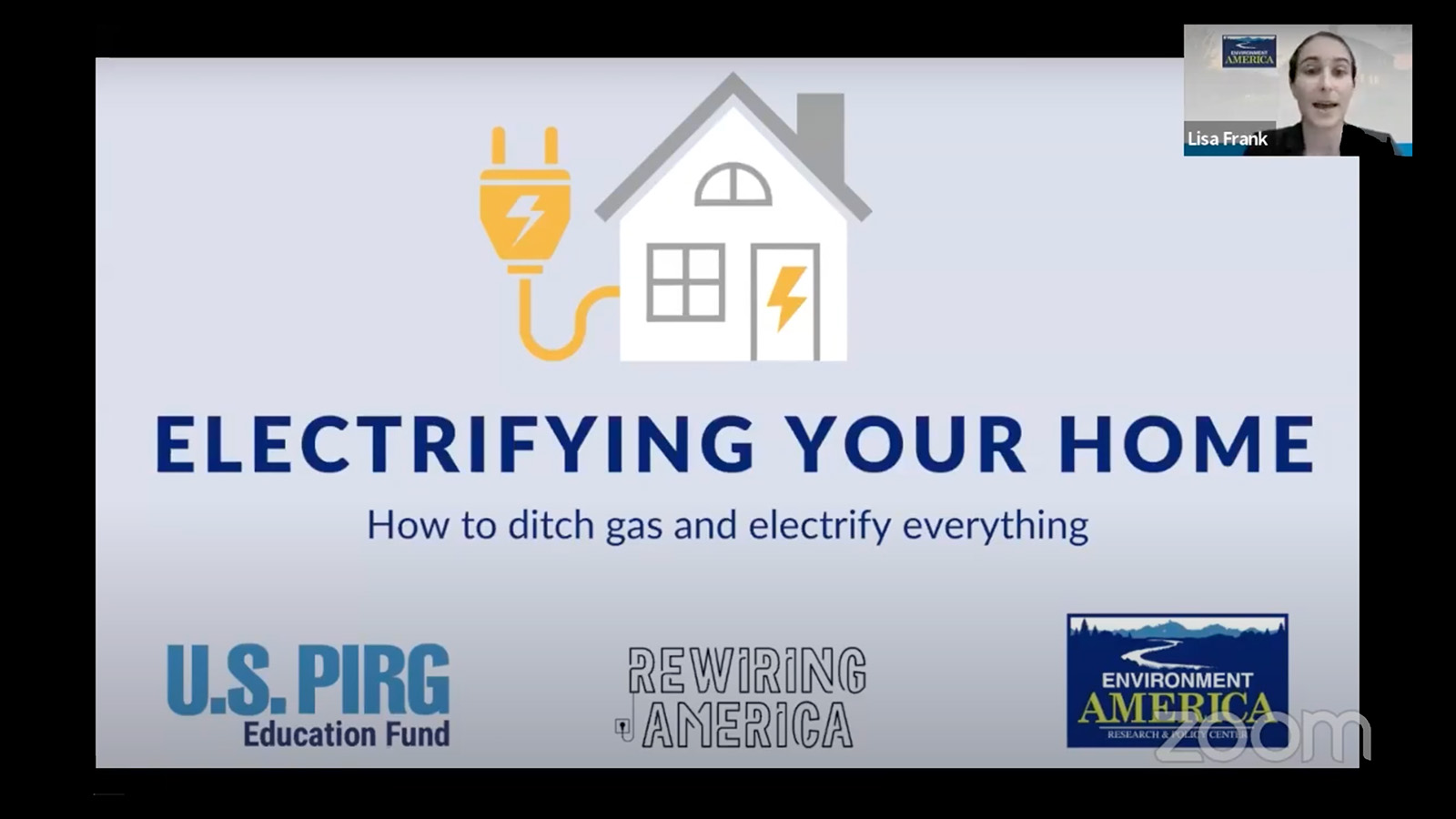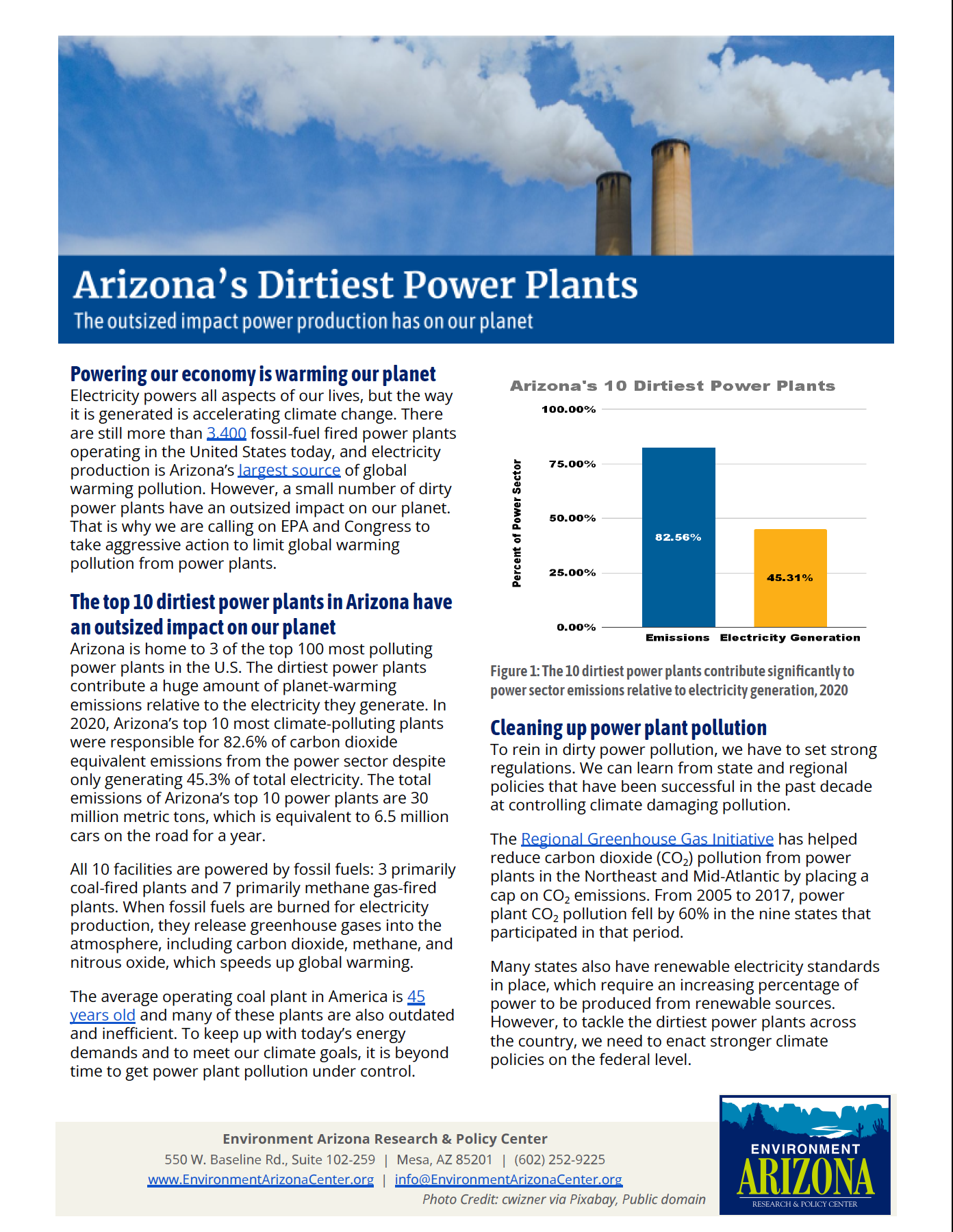
America’s Dirtiest Power Plants
Their Oversized Contribution to Global Warming and What We Can Do About It
Global warming is one of the most profound threats of our time, and we’re already starting to feel the impacts – especially when it comes to extreme weather. From Hurricane Sandy to devastating droughts and deadly heat waves, extreme weather events threaten our safety, our health and our environment, and scientists predict things will only get worse for future generations unless we cut the dangerous global warming pollution that is fueling the problem. Power plants are the largest source of global warming pollution in the United States, responsible for 41 percent of the nation’s production of carbon dioxide pollution, the leading greenhouse gas driving global warming.
Downloads
Environment Arizona Research & Policy Center

Executive Summary
Global warming is one of the most profound threats of our time, and we’re already starting to feel the impacts – especially when it comes to extreme weather. From Hurricane Sandy to devastating droughts and deadly heat waves, extreme weather events threaten our safety, our health and our environment, and scientists predict things will only get worse for future generations unless we cut the dangerous global warming pollution that is fueling the problem. Power plants are the largest source of global warming pollution in the United States, responsible for 41 percent of the nation’s production of carbon dioxide pollution, the leading greenhouse gas driving global warming.
America’s power plants are among the most significant sources of carbon dioxide pollution in the world. The 50 most-polluting U.S. power plants emit more than 2 percent of the world’s energy-related carbon dioxide pollution – or more pollution than every nation except six worldwide.
Despite their enormous contribution to global warming, U.S. power plants do not face any federal limits on carbon dioxide pollution. To protect our health, our safety and our environment from the worst impacts of global warming, the United States should clean up the dirtiest power plants.
A small handful of the dirtiest power plants produce a massive and disproportionate share of the nation’s global warming pollution.
- In 2011, the U.S. power sector contributed 41 percent of all U.S. emissions of carbon dioxide, the leading pollutant driving global warming.
- There are nearly 6,000 electricity generating facilities in the U.S., but most of the global warming pollution emitted by the U.S. power sector comes from a handful of exceptionally dirty power plants. For example, about 30 percent of all power-sector carbon dioxide emissions in 2011 came from the 50 dirtiest power plants; about half came from the 100 dirtiest plants; and about 90 percent came from the 500 dirtiest plants. (See Figure ES-1.)
- The dirtiest power plant in the United States, Georgia Power’s Plant Scherer, produced more than 21 million metric tons of carbon dioxide in 2011 – more than the total energy-related emissions of Maine.
Figure ES-1. The 50 Dirtiest Power Plants Contribute Significantly to U.S. Carbon Dioxide Pollution (Million Metric Tons – MMT), 2011
Dirty power plants produce a disproportionate share of the nation’s global warming pollution – especially given the relatively small share of total electricity they produce. For example, despite producing 30 percent of all power-sector carbon dioxide emissions, the 50 dirtiest power plants only produced 16 percent of the nation’s electricity in 2011.
The dirtiest U.S. power plants are major sources of global warming pollution on a global scale.
- If the 50 most-polluting U.S. power plants were an independent nation, they would be the seventh-largest emitter of carbon dioxide in the world, behind Germany and ahead of South Korea. (See Figure ES-2.) These power plants emitted carbon dioxide pollution equivalent to more than half the emissions of all passenger vehicles in the United States in 2010.
- The 100 most-polluting U.S. power plants produced more than 3 percent of the world’s carbon dioxide emissions from energy use in 2011, while the 500 most-polluting power plants were responsible for about 6 percent.
Figure ES-2. Carbon Dioxide Pollution Emitted by the 50 Dirtiest Power Plants Compared to Other Countries (MMT CO2
To protect our health, our safety, and our environment from the dangers of global warming, America must clean up polluting power plants.
- The Obama Administration should set strong limits on carbon dioxide pollution from new power plants to prevent the construction of a new generation of dirty power plants, and force existing power plants to clean up by setting strong limits on carbon dioxide emissions from all existing power plants.
- New plants – The Environmental Protection Agency (EPA) should work to meet its September 2013 deadline for re-proposing a stringent emissions standard for new power plants. It should also set a deadline for finalizing these standards no later than June 2015.
- Existing plants – The EPA should work to meet the timeline put forth by President Obama for proposing and finalizing emissions standards for existing power plants. This timeline calls for limits on existing plants to be proposed by June 2014 and finalized by June 2015. The standards should be based on the most recent climate science and designed to achieve the emissions reduction targets that are necessary to avoid the worst impacts of global warming.
In addition to cutting pollution from power plants, the United States should adopt a suite of clean energy policies at the local, state, and federal levels to curb emissions of carbon dioxide from energy use in other sectors.
In particular, the United States should prioritize establishing a comprehensive, national plan to reduce carbon pollution from all sources ̶ including transportation, industrial activities, and the commercial and residential sectors.
Other policies to curb emissions include:
- Retrofitting three-quarters of America’s homes and businesses for improved energy efficiency, and implementing strong building energy codes to dramatically reduce fossil fuel consumption in new homes and businesses.
- Adopting a federal renewable electricity standard that calls for 25 percent of America’s electricity to come from clean, renewable sources by 2025.
- Strengthening and implementing state energy efficiency resource standards that require utilities to deliver energy efficiency improvements in homes, businesses and industries.
- Installing more than 200 gigawatts of solar panels and other forms of distributed renewable energy at residential, commercial and industrial buildings over the next two decades.
- Encouraging the use of energy-saving combined heat-and-power systems in industry.
- Facilitating the deployment of millions of plug-in vehicles that operate partly or solely on electricity, and adopting clean fuel standards that require a reduction in the carbon intensity of transportation fuels.
- Ensuring that the majority of new residential and commercial development in metropolitan areas takes place in compact, walkable communities with access to a range of transportation options.
- Expanding public transportation service to double ridership by 2030, encouraging further ridership increases through better transit service, and reducing per-mile global warming pollution from transit vehicles. The U.S. should also build high-speed rail lines in 11 high-priority corridors by 2030.
- Strengthening and expanding the Regional Greenhouse Gas Initiative, which limits carbon dioxide pollution from power plants in nine northeastern states; and implementing California’s Global Warming Solutions Act (AB32), which places an economy-wide cap on the state’s greenhouse gas emissions.
Topics
Find Out More


“Certified natural gas” is not a source of clean energy

How you can electrify your home

